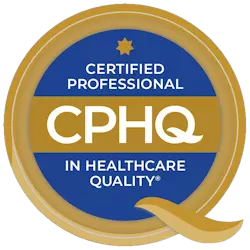Infected Pressure Ulcers
Background:
A Pressure Ulcer (PU) is localized injury to the skin and/or underlying tissue usually over a bony prominence, as a result of pressure, or pressure in combination with shear and/or friction. PUs cause considerable harm to patients, hindering functional recovery, frequently causing pain and the development of serious infections. PUs have also been associated with an extended length of stay, sepsis, and mortality.
The incidence of PUs is increasing due to our aging population and the increase in the elderly living with disability. Learning how to manage pressure ulcers appropriately is increasingly important for all professionals in wound care.The treatment for PUs is lengthy and causes a significant financial burden on the healthcare system. In the United States, an estimated $11 billion dollars is spent on pressure ulcers yearly, with up to $70,000 being spent on management of a single wound. (2018 data)
Although PUs are often preventable, their prevalence in health care facilities is increasing. Prevention entails two major steps: first, identifying patients at risk; and second, reliably implementing prevention strategies for all patients who are identified as being at risk. The IHI has a How-to Guide, which contains detailed information on how to prevent pressure ulcers and measures to guide improvement.
Diagnosis
PUs can become secondarily infected. Distinguishing a PU that is infected from one that is not can be challenging at times. Typical manifestations of infection may or may not be present initially, and only become apparent later in the course, should the patient develop a more complicated infection, such as an abscess, osteomyelitis, or bacteremia (bloodstream infection).
Management
The goals of treatment of infected PUs are to a)resolve the infection and b) implement measures to promote wound healing. A combination of surgical and medical interventions may be required. Surgical debridement is necessary to remove necrotic tissue and drain abscesses. Systemic antimicrobial therapy should be used for patients with serious pressure ulcer infections, including those with spreading cellulitis, osteomyelitis, or bacteremia. Because of the high associated mortality, empiric antibiotics are appropriate if bacteremia or sepsis is suspected.
Conclusion:
With an aging population, and an increase in the number of elderly and debilitated individuals, learning how to manage pressure ulcers appropriately is increasingly important for many healthcare professionals. A Pressure Ulcer Infection Expert Witness may be helpful in the evaluation of the care of a patient with suspected or confirmed Pressure Ulcer infection.
References:
1.https://www.ihi.org/Topics/PressureUlcers/Pages/default.aspx, accessed February 1, 2023
2. Boyko et. al. Advances in Wound Care 2018;7:2:57-67
3. Livesly and Chow. Clin Inf Dis 2002 35:1390-6



